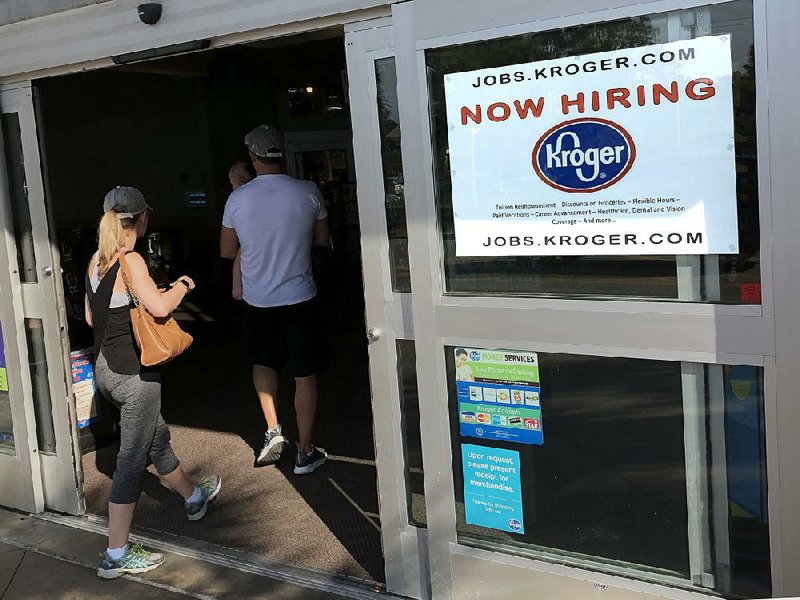WASHINGTON -- There are more job openings in the U.S. than unemployed workers to fill them, putting the labor market at a tipping point that's likely to help boost wages.
It's the first time that's happened since the government began tracking job openings in 2000.
Job openings hit a record of 6.7 million in April, the Labor Department reported Tuesday. That was an increase from an upwardly revised 6.63 million in March.
The revised data show that job openings outstripped total unemployed workers in March, and the trend continued in April.
There were 6.59 million unemployed workers in March and even fewer, 6.35 million, in April, according to the Labor Department's monthly report on job openings and labor turnover, also known as JOLTS.
"This labor market is a headhunter's dream as no company can hire the skilled or unskilled workers they need without an employment agency working for them 24/7 scouring the country for anyone they can find," said Chris Rupkey, chief financial economist at MUFG Union Bank in New York.
"And they aren't finding much. Looking under every rock. Leaving no stone unturned," he wrote in a research report.
The biggest increases in job openings in April were in manufacturing of long-lasting durable goods, such as airplanes and machinery, and the information sector.
Early in the recovery from the recession in 2009, there were more than six unemployed workers for every job opening. That ratio has been narrowing ever since. In April, there was just a 0.95 unemployed worker for every opening.
The Labor Department classifies people as unemployed if they do not have jobs, are available to work and have actively looked for jobs in the previous four weeks.
The total U.S. labor force of employed and unemployed workers was 161.5 million in April. But there were about 96 million adults over the age of 16 who were not in the labor force.
Many of those are retirees or students. But some could be lured back into the workforce as job prospects and wages rise.
Rupkey said the labor market is getting so tight that wages should begin rising faster as employers need to compete to lure and retain workers.
"Wages may be just months away from heading into the stratosphere where they start producing wage-push inflation the country hasn't seen since the '60s and '70s," he said.
When workers are confident they can find another job, they quit their current ones more frequently. The so-called quits rate -- workers leaving their jobs as a percentage of total employment -- held steady in April at 2.3 percent. That's the highest level since 2005.
Yet it's not clear that employers are trying very hard to fill all of their open jobs. Online job boards and software that makes it easier to scan resumes for keywords also make it easier for employers to post openings and initially screen applications, even if they're not actually prepared to hire.
The surest sign that employers were scrambling for workers would be steady pay gains, as businesses bid higher for the workers they need. Yet wages have continually remained sluggish compared with previous periods when the unemployment rate was this low.
Hourly pay rose 2.8 percent in May on average for all workers, excluding managers, compared with a year earlier. In April 2000, the last time the unemployment rate was as low as it is now, hourly pay jumped nearly 4 percent from the previous year.
That may indicate that employers aren't as desperate to hire as the robust number of job openings would suggest. For example, data from the Federal Reserve Bank of Atlanta show that workers who switch jobs are starting to enjoy healthier pay gains. That is a sign that companies are willing to pay more to lure workers from other companies.
But by historical standards, pay increases even for job-switchers are relatively low. In April, wages for job-switchers rose 4 percent, on average. But in December 2000, near the peak of the late 1990s boom, they were receiving raises of 6.5 percent.
Martha Gimbel, director of economic research at job listing site Indeed, points out that pay increases for Americans who remain in their jobs are actually falling. Wages for job-stayers were up just 2.9 percent in April, compared with 3.7 percent six months earlier.
Information for this article was contributed by Jim Puzzanghera of the Los Angeles Times; and by Christopher Rugaber of The Associated Press.
Business on 06/06/2018
